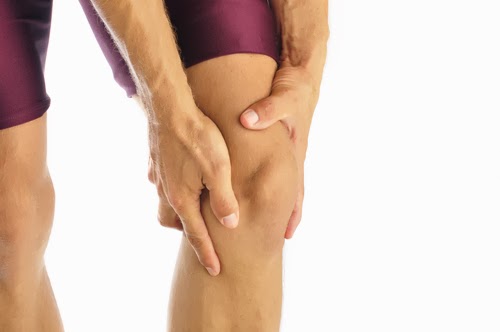
Why is exercise good for knees
Before we answer that query, let us have a look at the structure of the knee joint. ANATOMY OF THE KNEE JOINT Knee is the largest joint in the human body. It is made of 2 bony articulations - one between the femur (long bone of the thigh) and tibia (long, larger bone of the leg) and the other between the femur and the patella (the kneecap). INJURY TO THE KNEE JOINT Knees bear most of the weight of the body; no wonder then that they are more susceptible to injury than a lot of other joints. These injuries can be acute (occur suddenly) such as sporting injuries or chronic - occur due to microtrauma over years. As stated earlier, painful knee is a common musculoskeletal complaint - especially in the elderly population (1). What's worrying is that knee pain over prolonged period can cause a significant decrease in quality of life and function (2). Although, doctors refer patients of knee pain (with a suspicion of osteoarthritis) for radiologic tests, researchers are of the opinion that x-ray findings aren't always consistent with the degree of pain (3-5). More recently, it has been suggested that knee pain is a better predictor...
Before we answer that query, let us have a look at the structure of the knee joint. ANATOMY OF THE KNEE JOINT Knee is the largest joint in the human body. It is made of 2 bony articulations - one between the femur (long bone of the thigh) and tibia (long, larger bone of the leg) and the other between the femur and the patella (the kneecap). INJURY TO THE KNEE JOINT Knees bear most of the weight of the body; no wonder then that they are more susceptible to injury than a lot of other joints. These injuries can be acute (occur suddenly) such as sporting injuries or chronic - occur due to microtrauma over years. As stated earlier, painful knee is a common musculoskeletal complaint - especially in the elderly population (1). What's worrying is that knee pain over prolonged period can cause a significant decrease in quality of life and function (2). Although, doctors refer patients of knee pain (with a suspicion of osteoarthritis) for radiologic tests, researchers are of the opinion that x-ray findings aren't always consistent with the degree of pain (3-5). More recently, it has been suggested that knee pain is a better predictor of the degree of loss of function than radiological findings (5). Reduction of pain, therefore, assumes importance. Exercise, by strengthening muscles and other supporting structures of the knee and correcting any malalignments of joint surfaces, forms a big part of the strategy to reduce pain.
- Important notification about information and brand names used in this slideshow!
- Photo courtesy of G4 Physiotherapy by Picasa : picasaweb.google.com/lh/view?q=knee+pain&uname=109008901828086469253&psc=G&filter=1#5884204761436337986
- www.sparkpeople.com/resource/fitness_articles.asp?id=363
- 1. Urwin M, Symmons D, Allison T, et al. Estimating the burden of musculoskeletal disorders in the community: the comparative prevalence of symptoms at different anatomical sites, and the relation to social deprivation. Ann Rheum Dis 1998: 57: 649-55
- 2. Ayis S, Dieppe P. The natural history of disability and its determinants in adults with lower limb musculoskeletal pain. J Rheumatol 2009: 36: 583-91
- 3. Hadler NM. Knee pain is the malady--not osteoarthritis. Ann Intern Med 1992: 116: 598-9
- 4. Bedson J, Croft PR. The discordance between clinical and radiographic knee osteoarthritis: a systematic search and summary of the literature. BMC Musculoskelet Disord 2008: 9: 116
- 5. Creamer P, Lethbridge-Cejku M, Hochberg MC. Factors associated with functional impairment in symptomatic knee osteoarthritis. Rheumatology (Oxford) 2000: 39: 490-6
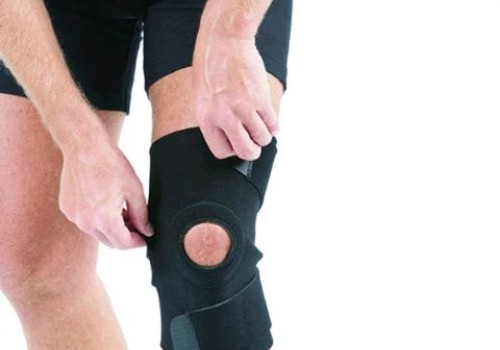
Knee Exercises
Severity of pain will dictate the exercises that you should do. Presence of severe pain will mean more ligament strengthening and flexibility work rather than resistance training. Once the pain gradually disappears and there is improvement in flexibility, its time to move on to the strength and stability phases. Thus, knee exercises can be categorized as under: FOR MUSCLE STRENGTHENING Step Ups Knee Flexion Ham curls Wall Slides Leg raises Stationary Bike FOR LIGAMENT STRENGTHENING Assisted Full Knee Extensions FLEXIBILITY WORK Ham stretches In the slides that follow, we will have a look at each of these exercises in detail.
- Important notification about information and brand names used in this slideshow!
- Photo courtesy of Audio Visual Junkie by Flickr : www.flickr.com/photos/audiovisualjunkie/7446943372/
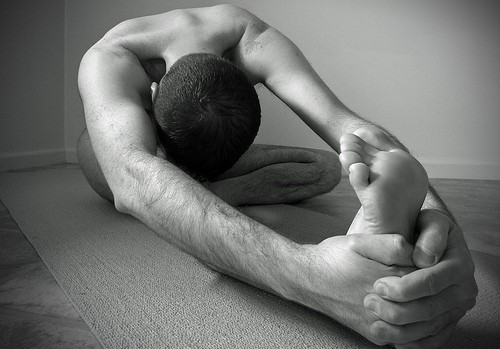
Assisted Full Knee Extensions
Most knee injuries - after pain disappears - would have a residual component of reduced flexibility. Also, full knee extension can be painful, especially in ligament injuries. Gradually increasing the range of knee extension holds the key. Full knee extensions are something that can really help you: here's what you need to do: 1. Sit on the floor or on an examination table with both your legs together and extended 2. Use an Ab Mat or a folded towel; place it under your calf muscle of the 'problem leg' 3. Let the knee push itself under its weight 4. If you feel a bit of pain, ease up a little by flexing the knee - if there is not pain, push on the knee using your hands 5. Hold for 10-15 seconds before relaxing for a full minute 6. Repeat the desired number of times 7. Build up on the time over days and weeks Note: once you can comfortably hold the knee in fully extended position (without experiencing any pain), its time to move on to resistance training.
- Important notification about information and brand names used in this slideshow!
- Photo courtesy of Nicholas A. Tonelli by Flickr : www.flickr.com/photos/nicholas_t/6039529153/
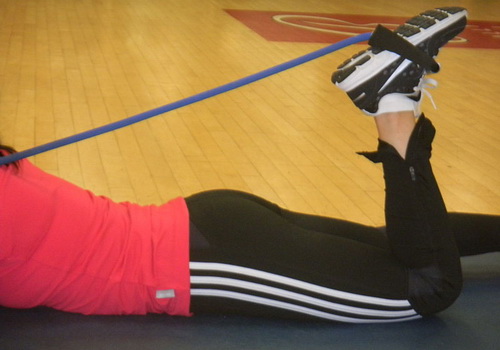
Band Knee flexion
Band knee flexions are used as a 'rehab tool'; these will come in real handy when knee pain rules out using machines or free weights. All you'd need is a resistance band; a towel will do just fine as well. This is what you need to do: 1. Sit in a chair with an upright lumbar posture 2. Hook the resistance band underneath the foot on the side of the 'problem knee' 3. Pull up your foot until your knee almost touches your chest 3. While keeping that pull on to resistance band, push with your foot till your leg straightens out 4. Repeat as many times as recommended Note: Make sure to stay balanced; pushing the other foot into the ground should do the trick.
- Important notification about information and brand names used in this slideshow!
- Photo courtesy of 88mvc by Wikimedia Commons : en.wikipedia.org/wiki/File:Prone_Knee_Flexion.JPG
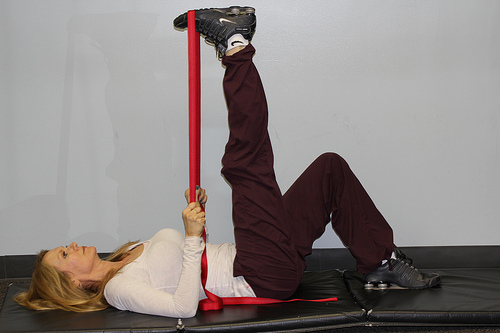
Hamstring stretches
All that strengthening and stability work won't help if you lack flexibility in the joint. A combination of muscle and ligament strengthening, stability work, static and dynamic flexibility works best when it comes to treating knee pain. Flexibility work, like strengthening, is a gradual process. You have to take it real slow, especially if joint stiffness is associated with pain. Here's what you need to: 1. start with static stretches : hands to toe, seated hands to toe, side hamstring stretches and the likes. Remember, static stretches will involve holding the stretch for a few seconds before relaxing. Also, do not stretch 'too much, too soon' 2. Once you reach a certain level and there is no pain during static stretches, you can move on to 'ballistic stretches' - this involves using momentum while stretching. Alternate side hamstring stretches - as shown in the picture here - are a perfect example
- Important notification about information and brand names used in this slideshow!
- Photo courtesy of bwanderd by Flickr : www.flickr.com/photos/86598533@N04/8252235403/
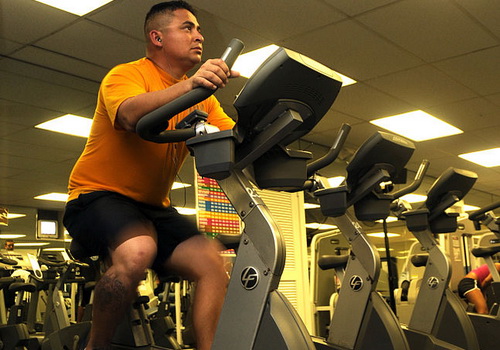
Stationary bike
A painful knee - either due to injury or otherwise - can very quickly rule out the possibility of using a squat rack or a hamstring curl machine. When that happens, you have to start from scratch. If you find yourself in this situation, a stationary bike, especially a spinning bike, can do wonders for you. Benefits of using a spinning bike are: 1. Improved flexibility around the knee 2. Improved muscle strength - especially in the quads and hams 3. Because of its rather low-impact intensity, spinning bike prevents aggravation of injury and thus helps healing process Note: You can also try training intervals on the spinning bike as well.
- Important notification about information and brand names used in this slideshow!
- Photo courtesy of Mass Communication Specialist 2nd Class Mark Logico by Wikimedia Commons : commons.wikimedia.org/wiki/File:US_Navy_100120-N-7498L-025_enior_Chief_Navy_Counselor_Tony_Peraza_assigned_to_Navy_Recruiting_District_Los_Angeles_works_ou
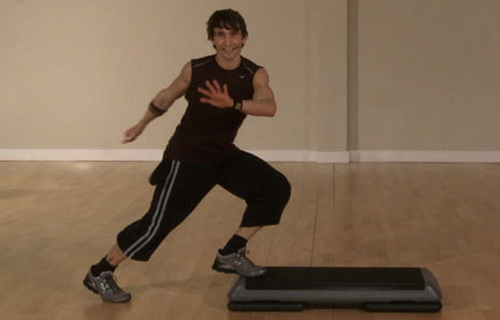
Step-ups
If you have never done these, it is advisable to do body weight step-ups initially. This is how a step-up is supposed to be done. 1. Use a gym bench or an aerobic step bench 2. Stand a step away from the bench with both feet together 3. Keeping your hands on your hips, step onto the bench with one foot and follow through with the other foot 4. Climb down and repeat Note: you can finish the number of reps with one leg or alternate between legs to complete the set. Once you are confident enough with your balance, use some form of resistance - dumbbells work like a charm - hold dumbbells in either hands throughout the set.
- Important notification about information and brand names used in this slideshow!
- Photo courtesy of thinqfitness by Flickr : www.flickr.com/photos/34318182@N07/3409184408/
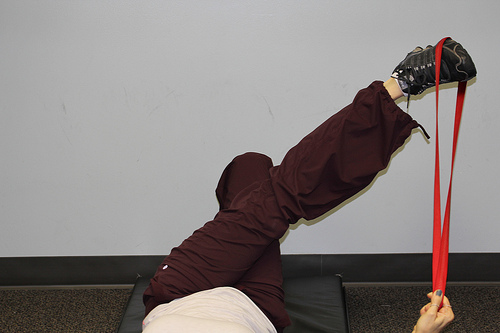
Hamstring curls
Hamstring curls strengthen the muscle at the back of your thigh - the hamstrings. These are traditionally done using the 'ham curl machine'. However, if you feel pain in the knee, using a machine is likely to do more harm than good. An alternative is the lying ham curls using a cable machine (or a TRX as shown in the picture). Here's how it is done: 1. Lie down in front of a cable machine 2. hook your foot into the handle 3. Keeping you back on the ground, straighten your leg through the knee till it is almost 90 degree to the horizontal (or pointing toward the cable machine 4. To steady yourself, push with your hands into the floor - curl by bending through the knee until your calf touches the back of your glutes 5. Repeat for the desired number of repetitions
- Important notification about information and brand names used in this slideshow!
- Photo courtesy of bwanderd by Flickr : www.flickr.com/photos/86598533@N04/8253303944/
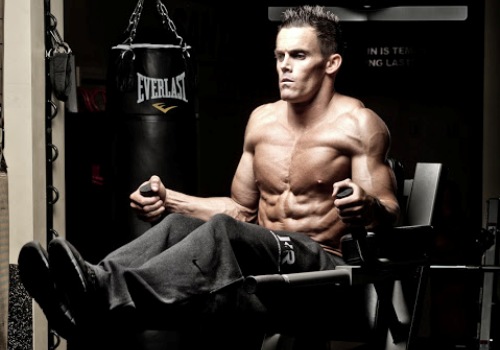
Hanging Leg raises
Leg raises are a great way to build core strength, get a flatter tummy and stretch out your abdominal. In doing so, leg raises help improve your posture and sporting performance while reducing reduce injury risk. However, there more to leg raises. What most people don't know is that leg raises (especially the hanging ones) are good for your knees as well. When done with added resistance or as a high-rep exercises, hanging leg-raises help in improving stability of the knee joints. Here's what you need to do: 1. Hang from a pull up bar; you can also use the dip-station 2. keeping a slight bend in the knee, pull your feet up as high as you can 3. Pause at the top for a moment before lowering them under control 4. Finish off the recommended number of repetitions Note: Use high-reps or resistance to increase the stimulus on the knee.
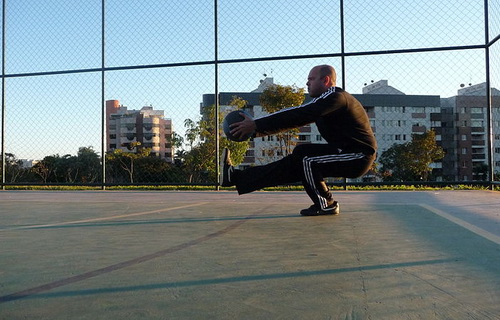
Single Leg Wall slides
Wall slides are great way to emphasize tissues around your knee joint. 1. Stand a foot away from a wall 2. Place a stability ball between you and the wall 3. Using the stability ball for leverage, take your normal leg off the ground 4. Using the 'problem leg' squat down as much as you can 5. Pause at the bottom for a second before coming back up 6. Complete the required number of repetitions
- Important notification about information and brand names used in this slideshow!
- Photo courtesy of Jgcastor by Wikimedia Commons : en.wikipedia.org/wiki/File:Pistol_squat.jpg


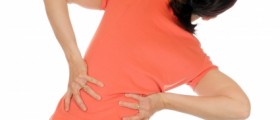


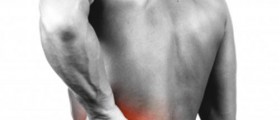
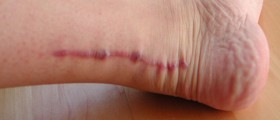
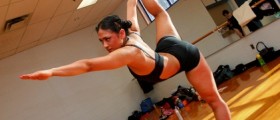
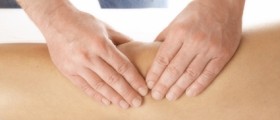
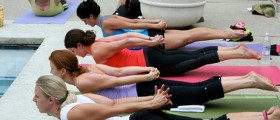




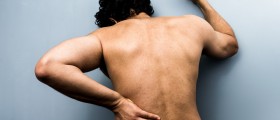

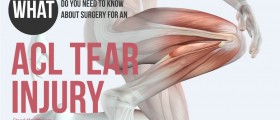
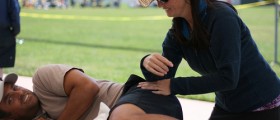
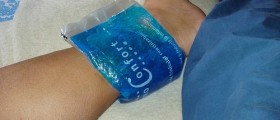
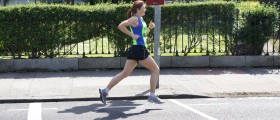


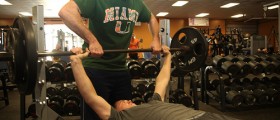
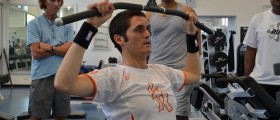

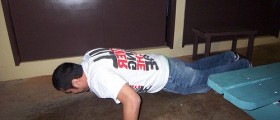
Your thoughts on this
Loading...